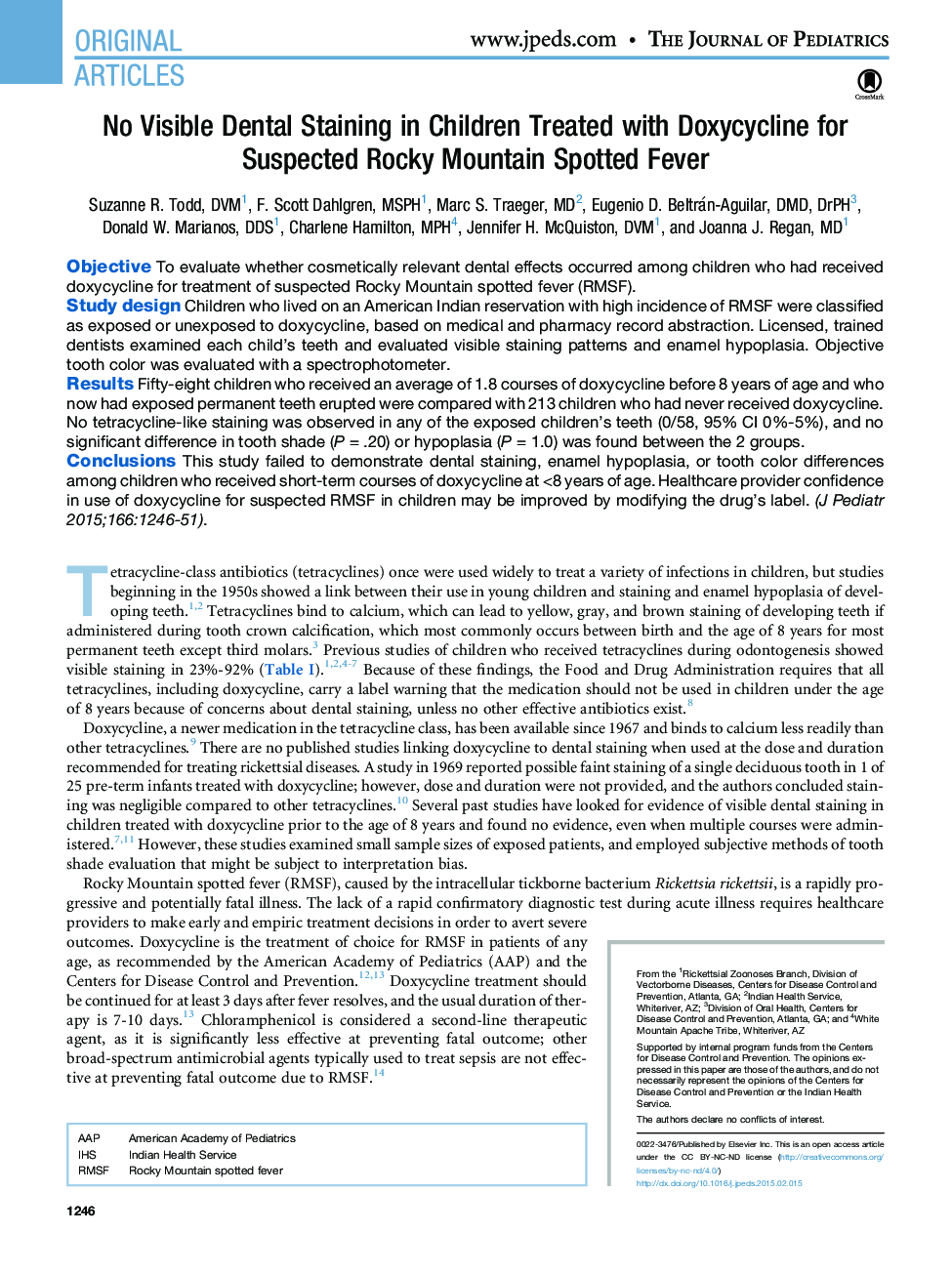| Article ID | Journal | Published Year | Pages | File Type |
|---|---|---|---|---|
| 6221153 | The Journal of Pediatrics | 2015 | 6 Pages |
ObjectiveTo evaluate whether cosmetically relevant dental effects occurred among children who had received doxycycline for treatment of suspected Rocky Mountain spotted fever (RMSF).Study designChildren who lived on an American Indian reservation with high incidence of RMSF were classified as exposed or unexposed to doxycycline, based on medical and pharmacy record abstraction. Licensed, trained dentists examined each child's teeth and evaluated visible staining patterns and enamel hypoplasia. Objective tooth color was evaluated with a spectrophotometer.ResultsFifty-eight children who received an average of 1.8 courses of doxycycline before 8 years of age and who now had exposed permanent teeth erupted were compared with 213 children who had never received doxycycline. No tetracycline-like staining was observed in any of the exposed children's teeth (0/58, 95% CI 0%-5%), and no significant difference in tooth shade (P = .20) or hypoplasia (P = 1.0) was found between the 2 groups.ConclusionsThis study failed to demonstrate dental staining, enamel hypoplasia, or tooth color differences among children who received short-term courses of doxycycline at <8 years of age. Healthcare provider confidence in use of doxycycline for suspected RMSF in children may be improved by modifying the drug's label.
